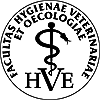Movement
TASK 1: Brownian motion
Place a drop of ferric oxide suspension onto a slide and cover it. Observe one small moving particle and draw trajectory of its movement. What is the principle of this movement?
TASK 2: Amoeboid movement
NP: hay infusion
Observe movement of amoeba from the hay infusion. First, they are irritated and round, after some time they start to show protrusions (pseudopodia) and move. Pseudopodia are homogenous, cytoplasm is granulated. What is the principle of this movement?
TASK 3: Flagellar movement
NP: sperm (or hay infusion)
Observe the flagellar movement of sperm (movement forward and rotation around axis) or movement of flagellar protozoans from hay infusion. If you want to slow them down, suck off water from the space between the two glasses using a filter paper.

Fig.: Types of movements: A – Brownian movement, B – amoeboid movement, C – flagellar movement.
TASK 4: Ciliary movement
NP: hay infusion, detritus from aquarium
Observe ciliary movement of unicellular ciliates from hay infusion or ciliary movement on the surface of some multicellular organisms (flatworm) from aquarium. What is the principle of a ciliary movement?
TASK 5: Cells with cilia
PP: cells with cilia - "řasinkový epitel, žába", stained with haematoxylin-eosin
Observe and draw cells of cylindrical or conical shape with visible nucleus and with cilia localized at the wider base of the cell.
TASK 6: Structure of striated muscle
PP: striated muscle from an insect leg - "příčně pruhovaný sval", stained with Heidenhain haematoxylin
Observe the striated muscle. Striation is caused by different staining of muscle fibers. What is the principle of a muscle contraction?

Fig.: A – cell with cilia, B – striated muscle of insect.
Content
- Biology
- Chemical composition
- Non-cellular life
- Prokaryotes and immersion microscopy
- Eukaryotes
- Movement and irritation
- Transport of substances, osmosis
- Mitosis
- Reproduction and development
- Influence of surroundings onto the bioplasm
- Research methods in biology
- Genetics
- Cytogenetics
- Model organism
- Monohybridism
- Polyhybridism
- Polymorphic genes
- Gene interactions
- Inheritance and sex
- Genetic linkage
- Population genetics
- Quantitative genetics
- Nonmendelian inheritance


